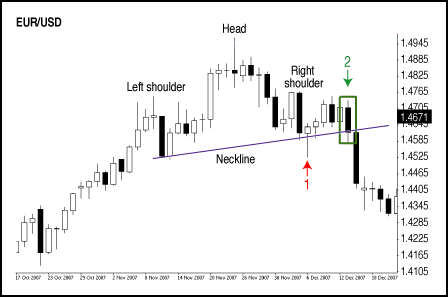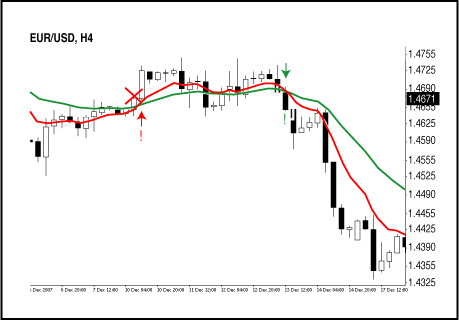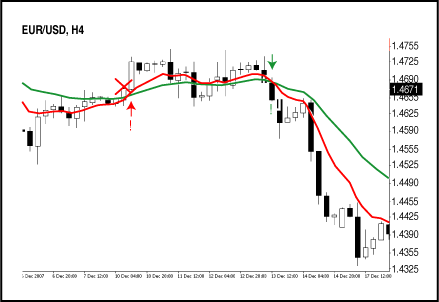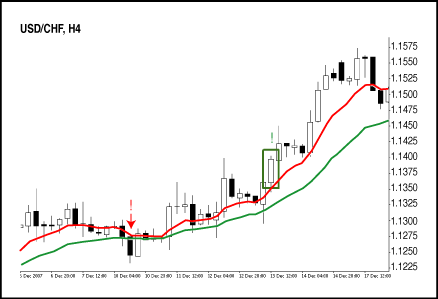Access to foreign exchange trading has opened up exciting trading options for the retail trader. You can now trade alongside corporations and institutions in a highly liquid market that is global, traded around the clock, and highly leveraged. Before jumping into this market, however, we must understand the factors that affect the forex market. With that in mind, STOCKS& COMMODITIES has introduced Forex Focus to better prepare the retail trader to participate in the currency market.
When trading, who or what can be your ally?
by Alexander Sabodin
Working in the financial markets as a trader can be fascinating, considering it gives you the opportunity to earn money and do so independently. You can trade from anywhere in the world with the help of a computer and the Internet. But any medal has its reverse. Such types of jobs come with their fair share of risks. First of all, there is the danger of losing money. Second, the responsibility of making the buying and selling decisions is entirely on your shoulders; you can't depend on anybody else. You are essentially on the battlefield alone and fighting your enemies alone.
In any battle, you should have allies that help you make the right decisions and keep you away from making the wrong ones, or at least you hope that is the case. When trading, who or what can be your ally? Believe it or not, a tradable that is correlated with another in terms of price movement can be.
ALLY CURRENCIES
In the foreign exchange market, the USD/CHF currency pair is an ally to the EUR/USD pair. The economics of Switzerland are closely connected with the economics of the countries of the European zone, which is not surprising given that Switzerland is located in the central part of Europe. In addition, if you look at the charts of these currencies with respect to the US dollar, they look like mirror-image twins.
Our tactics are relatively simple. If these two currency pairs move synchronously and give confirming signals, we consider it a strong signal and open a position. If we get a signal from one currency pair and the second pair doesn't provide a corresponding signal, we stay out of the market until we get a confirmation. That's all there is to this system.
HEAD & SHOULDERS
Let's consider two neckline breakthrough signals on the EUR/USD (Figure 1A) and USD/CHF (Figure 1B). The first breakthrough is fake; it is marked by the number "1." In a situation like this you could give into emotions and start selling EUR/USD (pay attention to the long pin), but the USD/CHF told us a different story. These conflicting signals kept us out of placing a trade. In a few days, the USD/CHF breaks the neckline. This is marked by the number "2." At this point, I don't have complete confidence to open a position in the EUR/USD since it lags behind the USD/CHF. If on the next trading day the movement continues in the same direction, then I would consider opening a position.

FIGURE 1A: EUR/USD AND PATTERN BREAKOUTS. Even though prices broke out of the neckline, the first breakthrough was fake.MOVING AVERAGE CROSSOVERS
FIGURE 1B: USD/CHF PATTERN BREAKOUTS. The USD/CHF broke through the neckline, but should you open a position now or wait till the EUR/USD gives a similar signal?
Let's analyze two situations by applying moving average crossovers. Most of you may be aware of the application of moving average crossovers. To put it briefly, when two moving averages of different periods cross, the faster one, or the one with the shorter period, shows the direction of price movement.
By applying moving average crossovers to the allied currencies, we get a natural and flexible filter to eliminate fake signals. Take a look at the areas marked with the red exclamation point. While the intersection of the moving averages takes place on the EUR/USD pair (Figure 2A), the USD/CHF pair (Figure 2B) doesn't have this signal. This tells us to eliminate an unprofitable deal. And if you look at the chart of the EUR/USD you can see that after the buy signal there was a sell signal, marked in green. The USD/CHF confirms that the signal is steady. Therefore, we open the position on the lagging EUR/USD pair.

FIGURE 2A: EUR/USD AND MOVING AVERAGE CROSSOVERS. The EUR/USD pair shows a moving average crossover, but it is not confirmed by the USD/CHF. When a sell signal later appears on the EUR/USD, what does the chart of the USD/CHF tell you?Undoubtedly, the application of allies is not restricted to the forex market. In the same way you can track price movement on Brent, with crude light sweet oil, heating oil, and natural gas in the commodity markets. In the stock market you could follow the price movement of two or three ally stocks, commonly referred to as pairs trading. In the case of stocks you can trade just the stock that lags behind the one showing a distinct signal. When you come across a scenario where the signal has worked on one financial instrument but nothing is happening on the second, the best thing to do is to stay out of the market and either wait for two confirming signals to develop or move on to something else.
FIGURE 2B: USD/CHF AND MOVING AVERAGE CROSSOVERS. The USD/CHF shows no moving average crossover. It shows us that the trend is steady. So when the moving average crosses the second time in the EUR/USD chart, the continuation of the trend is confirmed. Hence, you can open a position.
Alexander Sabodin is a consultant for ForexLine Company in Belarus. He may be reached at www.fxline.by.
SUGGESTED READING
Sabodin, Alexander [2008]. "The Alligator Indicator," Technical
Analysis of STOCKS & COMMODITIES, Volume 26: January.
_____ [2008]. "An Macd Trading System," Technical Analysis of
STOCKS & COMMODITIES, Volume 26: March.
ýMetaTrader (MetaQuotes)
Originally published in the May 2008 issue of Technical Analysis
of
STOCKS & COMMODITIES magazine. All rights reserved. © Copyright
2008, Technical Analysis, Inc.
Return to May 2008 Contents

